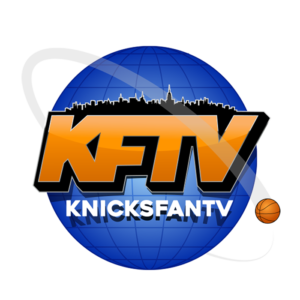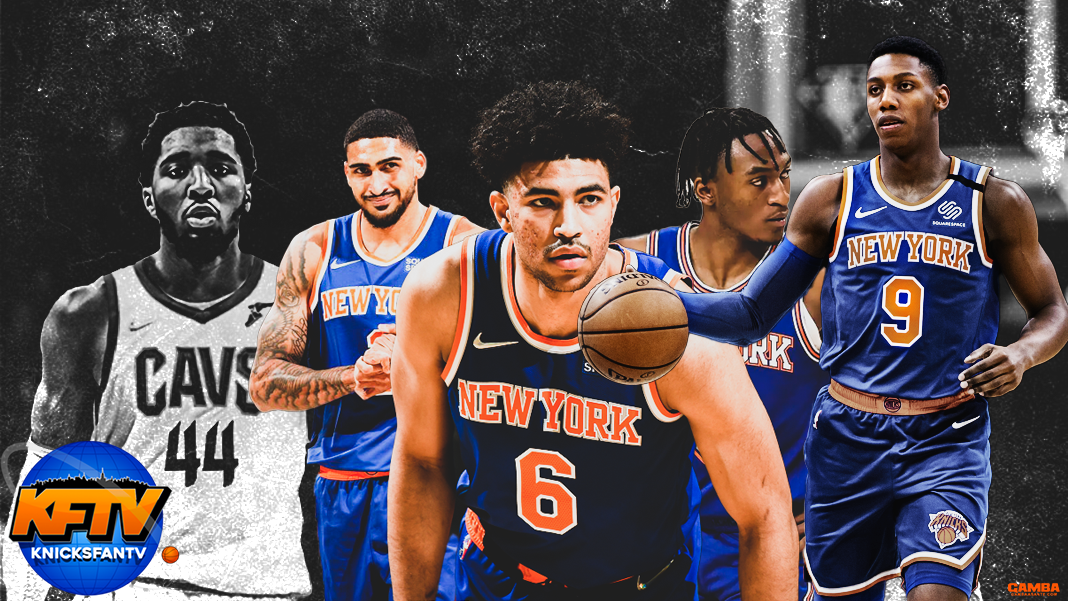The New York Knicks didn’t land Donovan Mitchell, which leads to questions on how the franchise should operate moving forward.
It’s been a few weeks since the Cleveland Cavaliers tiptoed into the Donovan Mitchell negotiations and stole an early Christmas from Knicks fans. So we’ve had enough to reflect on what happened with a clearer mind.
Since the Rudy Gobert trade took place in early July, everyone and their mother—Mitchell included—expected Utah to send him home this offseason. I had warned about potential ‘sharks in the water earlier, but even I bought into the hype. Mitchell’s introductory press conference in Cleveland on September 15 made the trade official, so it’s time for New York to officially move on from the Spida until his next free agency decisions in 2025.
To remind you of the trade details, the Cavs traded Lauri Markkanen, Ochai Agbaji, Collin Sexton, three unprotected first-round picks (2025, 2027, and 2029), and two pick swaps (2026 and 2028) to Utah in exchange for Donovan Mitchell. Sexton agreed to a four-year, $72 million contract with the Jazz as part of the deal.
A 20/20 hindsight shows us that Cleveland was in a much better position to make the blockbuster trade, anyway. Steadfast dedication to the rebuilding process and some lottery luck landed them a slew of young prospects, including all-star guard Darius Garland and (Tim Duncan-lite) Evan Mobley. Then, through more good fortune, Jarrett Allen also fell into their laps in the James Harden/Nets/Rockets trade.
Donovan Mitchell will join a promising team that features other premium 25-and-younger talent. Plus, a solid veteran core of Caris LeVert, Kevin Love, Cedi Osman, and Ricky Rubio (when he returns from injury) will likely round out their bench. In addition, 21-year-old Isaac Okoro also shows flashes of elite defensive ability. As a result, Cleveland’s stock is set to skyrocket in the Eastern Conference standings and challenge contenders like Miami and Philadelphia.
New York, meanwhile, will enter next season without the homecoming they’d been planning all summer. This disappointing whiff dims the glimmer of an otherwise successful Knicks offseason. And to add insult to injury, the Knicks will play the Cavs four times this season: 10/30, 12/4, 1/24, and 3/31; add some of those dates to the list of this year’s “must watch” games.
Leon Rose & Co did their due diligence in negotiating with Utah. Shams reported in late August that the Knicks made an offer of Evan Fournier, Obi Toppin, additional salary, and five first-round draft picks—two of which were Knicks’ unprotected picks. This offer was viewed as a lowball, but trade talks seemed to intensify over time until the Knicks finalized the RJ Barrett extension, and the Cavs took advantage of the moment by proposing their best package.
Ultimately, Utah’s asking price was simply too high. A no-deal was the best outcome for these negotiations, especially considering their desperation in making an offer involving RJ Barrett. (Time will tell whether that will cause a rift in Barrett’s relationship with the organization. Entering the upcoming season with a lead duo of Donovan Mitchell and Julius Randle would immediately cap their ceiling as a ~45-win team. A Mitchell-Barrett tandem would be the more ideal situation in terms of both potential and entertainment. But perhaps it was just never meant to be. Not yet, at least.
Knicks fans know all too well how quickly the team’s ceiling can fall onto their heads after trading the farm for an all-star, so drawing a line in the sand showed unprecedented patience for a 21st-century New York front office. But the list of unrealized, photoshopped, rumored Knicks acquisitions continues to grow: LeBron James, Kevin Durant, Kyrie Irving, Zion Williamson, Jaden Ivey, Dejounte Murray, and now Donovan Mitchell. How long until they actually make their next splash? Is Jalen Brunson, Leon Rose’s godson, the best they can do?
The better question is: what is the direction of this team? The franchise has swung and missed on stars too often to continue to believe in their ability to hit home runs. So in return, they sign veterans to help the team compete with middle-of-the-pack rosters, and when they draft players, they refuse to give them ample opportunities to grow. Instead, they’ve made purgatory a permanent home.
It’s not so much about where their picks land. Lottery picks in the 8-14 range are still valuable—Mitchell himself went #13 in 2017. The organization won’t commit to a full-blown rebuild. Rebuilding doesn’t necessarily mean tanking, but it does mean inserting Immanuel Quickley in the starting lineup as soon as you’re eliminated from the playoffs. Rebuilding means playing your most recent lottery pick at least 18 minutes per game (I’m setting the bar low here). In hindsight, rebuilding also means keeping your #11 pick in this year’s draft to take Ousmane Dieng, Jalen Duren, Mark Williams, A. J. Griffin, or another prospect.
Realistically, can the Knicks even compete this year with their current roster? To avoid the play-in, they will have to be better than one of Miami, Milwaukee, Boston, Philadelphia, Toronto, or Chicago. The Nets, Hawks, Cavs, Hornets, and Wizards will also be in contention for a top ten spot. The addition of Brunson and Hartenstein should help New York improve from their 37-win season, but can they win enough for it to matter?
Honestly, if there ever were a year to disappoint in the standings, it would be this year with the rumored superstar-level talent waiting in the 2023 draft. The lottery balls haven’t fallen in New York’s way lately, but every year brings new hope. At the very least, the scouting team has earned the trust of the fanbase to make the proper selection wherever their pick lands.
In the meantime, player development should be the priority this upcoming season. Quickley has earned the right to be the first guard off the bench every game this year. Only Cam Reddish and Quentin Grimes should compete for the starting wing spot. Obi Toppin, the #8 pick in 2020, deserves to be higher than 31st (!) in his draft class in minutes per game, considering he’s already 24 years old (and, for reference, only one day younger than Jayson Tatum).
Veterans provide irreplaceable on and off-court leadership, and I’m not advocating for trading players like Derrick Rose, Evan Fournier, or Julius Randle for pennies. But prioritizing the youth is a win-win in this case. New York’s young core is faster, more energetic, and more entertaining. If they win games, it’s a pleasant surprise. If they lose, it’s a quality learning experience. And overall, the team can properly evaluate their talent to figure out who’s worth keeping and letting go of before it’s time to pay them. With no star on the team, the Knicks’ future rests in the young core’s hands, anyway.
Financially, it’s probably in the organization and Madison Square Garden’s best interest to field a win-now team, make a run for the playoffs, and charge quadruple for postseason tickets. On top of that, the emotional, overdramatic voices of Knicks “fans” (Stephen A. Smith) and Knicks-for-click-ers will haunt the team with mentions of Donovan Mitchell the minute the Knicks begin to struggle.
The franchise, however, must turn its cheek and put itself in the best position to compete for the foreseeable future. Just one intentional rebuilding year, one more year of team-chemistry building and player development, one final year of playing the lottery with their scouting masterminds, and the Knicks will be in a much better position to compete in 2024 and beyond.
So forget about Shai Gilgeous-Alexander, OG Anonuby, or whoever else enters the open market next. The Knicks have some in-house maintenance to do before they worry about landing the next big name available.
Stay tuned to KnicksFanTV.com for the latest Knicks news, rumors, and recaps throughout the 2021-22 NBA season. And in case you missed it, check out Knicks Weekly, where CP, Alex, & JD discuss the Knicks’ young core and where they rank in the Eastern Conference!













